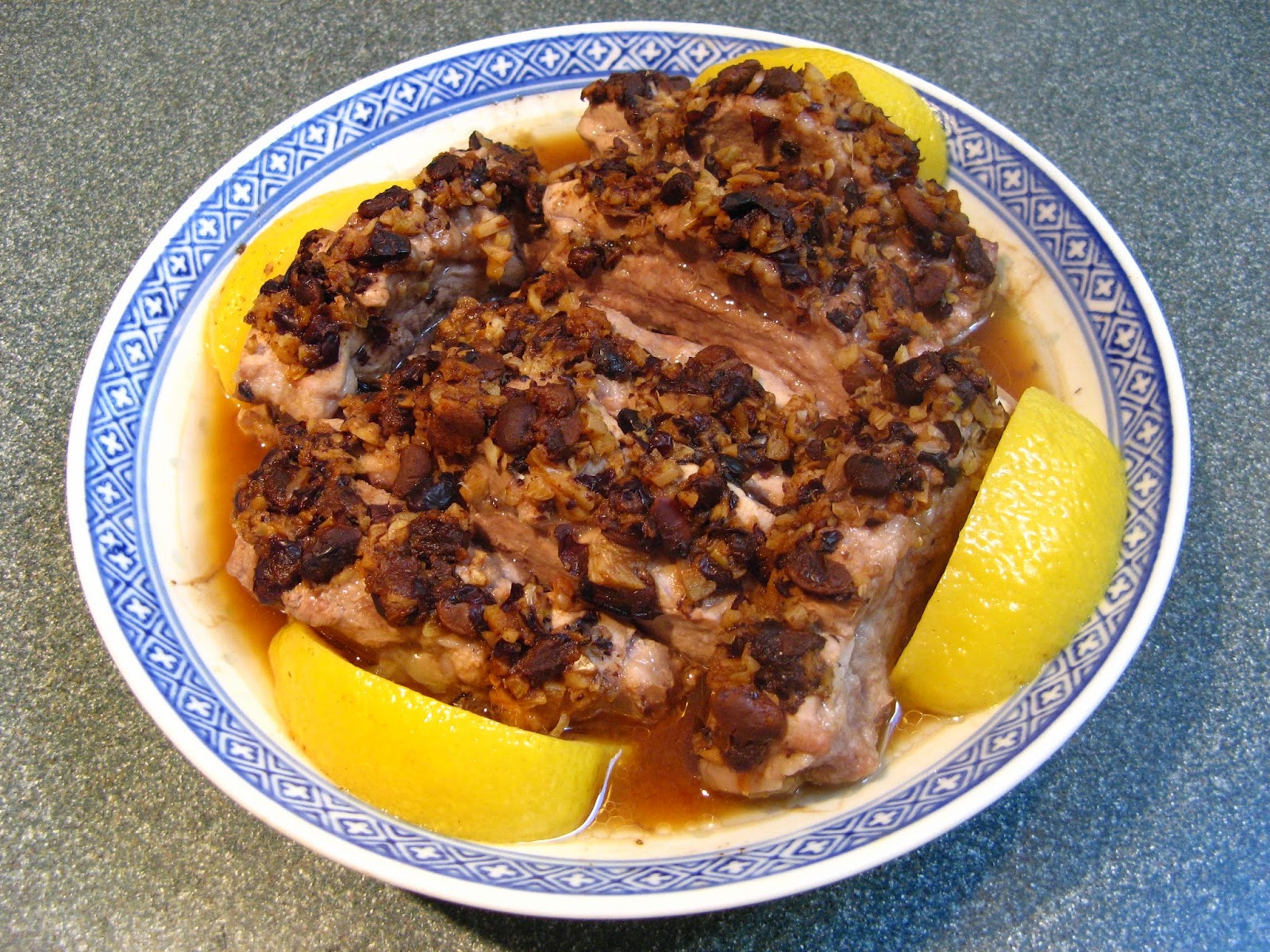 This will probably be the last post for 2014. So with the
last recipe of 2014, I wish you and your family a Happy New Year for 2015, and
will see you next year with more recipes.
This will probably be the last post for 2014. So with the
last recipe of 2014, I wish you and your family a Happy New Year for 2015, and
will see you next year with more recipes.
So the final 2014 recipe is for grill smoking a whole turkey
with apple and oak wood that I made for my family’s Christmas dinner. You were
probably expecting a photo of the whole cooked turkey in this post (it was
impressive looking!), but since I was pressed for time cooking Christmas dinner,
I wasn’t able to take any photos and the photo above is for the leftovers.
The turkey is made with a spice paste that is placed in the
space between the skin and meat of the breast, thigh, drumstick, and back. The
space is created by separating the skin from the meat using your hand or the end
of a long cooking spoon. Even though the skin is separated from the turkey
meat, it is still attached to the turkey, forming pockets for a spice paste. If
using your hand to create the pockets, you have to be prepared to place your
hand (and part of your arm) into the turkey. I use this method because I’m able
to feel the interface between the skin and meat, and use my fingers to separate
the skin from the meat without breaking the skin.
When I first thought about making the paste using a food
processor, I wanted to use a fresh rosemary, garlic, kosher salt, and olive oil
mixture. It’s a classic combination and I happen to have rosemary growing in my
backyard. Lemons and lemon juice are typical additions, but I decided to give
the paste an Asian twist by using lemongrass. Only the white portions of the
lemongrass are used in the paste, and the inedible green portions, together
with the rosemary stalks, are stuffed into the turkey cavity.
Inevitably, some of the spice paste gets on the outer skin
when you’re putting the paste into the turkey. Don’t worry, since this adds to
the flavor of the skin. The turkey skin is coated with a mixture of kosher
salt, pepper, and baking soda. The idea and use of baking soda came from America’s
Test Kitchen. The baking soda not only helps with browning, but also with
crisping the skin. I used double the amount of ingredients called for in the America’s
Test Kitchen recipe, keeping the 1:1:1 ratio of kosher salt, pepper, and
baking soda.
Root vegetables can be cut up, coated with olive oil, and
placed in the bottom of the roasting pan if desired. Pan roasted vegetables is
a nice addition to the meal and doesn’t really add to the cooking time. The pan
roasted vegetables also add some flavor to any gravy that is made from the
drippings. I also put the turkey neck and organs on top of the vegetables in
the pan to be cooked, but you can also omit these items and use them for stock
or directly in the gravy.
A gas grill with a thermometer is necessary for grill
smoking a whole turkey. Maintaining a constant temperature of 350⁰F (175⁰C) and previous experience with your gas grill
will determine the total cooking time for the turkey. I have found that 12
minutes per pound (450 g.) produces the right results (again, previous
experience determines total cooking time). So for a 14 lb. (6.4 kg.) turkey, a
total of 3 hours is needed to cook the turkey.
The size of your gas grill also matters since that will
determine how many burners can be kept on for indirect cooking, which
influences the ability to maintain a constant temperature. My gas grill is
large enough to keep both end burners on during cooking, so I’m able to center
the roasting pan with the turkey between two lit burners. For smaller gas
grills, only one end can usually be kept lit for indirect cooking once the
roasting pan with the turkey is placed on the grate, which might necessitate an
increased cooking time. Regardless, the roasting pan should be rotated 180⁰ half way through the cooking
time to even out any hot spots in your gas grill.
The turkey should rest for 30 minutes or more before carving,
so don’t carve the turkey immediately after coming out of the grill since all
the juices will not remain in the turkey meat and will just drain onto the
cutting board. I consider a turkey just a large chicken, so you can follow the
instructions for cutting a chicken in the Poached
Chicken (白斬雞, Baak6 Zaam2
Gai1) with Ginger-Scallion Oil (薑蔥油,
Goeng1 Cung1 Jau4) recipe to carve the
turkey. Unlike the chicken, where all the meat will fit onto one plate,
separate the turkey dark meat from the white and use two plates. In the end,
the turkey was very tasty and my family was duly impressed with the flavor.
Enjoy!




































